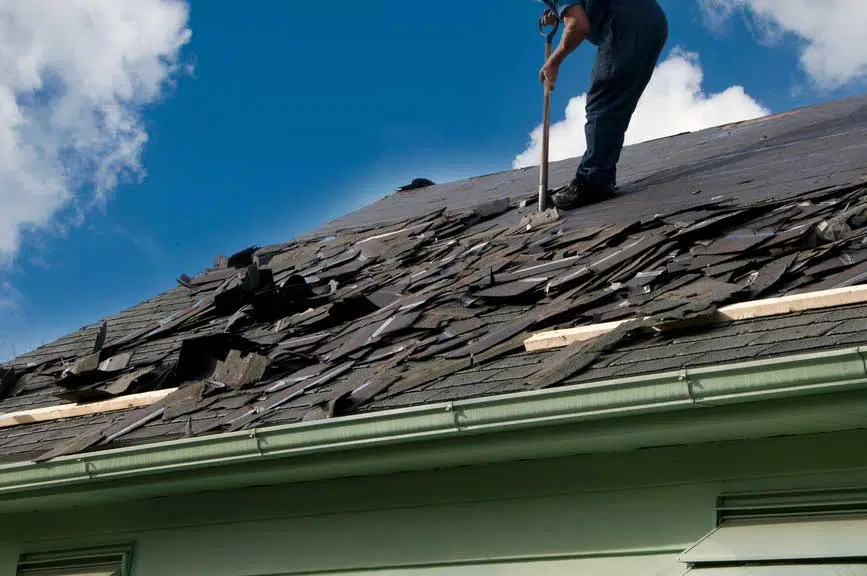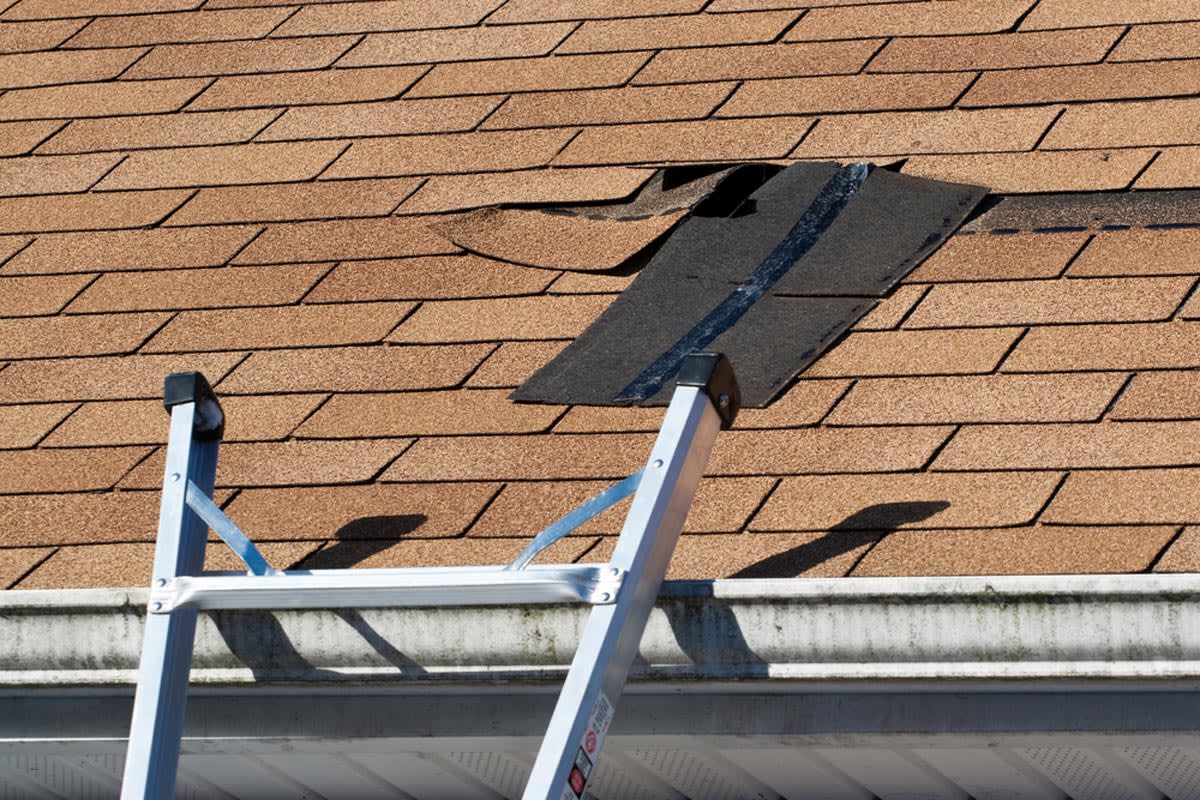Roof Covering: A Comprehensive Overview to Roof Covering Basics
Roofing is a vital element of any building, providing protection against the components and ensuring the architectural honesty of a residential property. In "Roofing: A Comprehensive Guide to Roof Basics," we look into the basic knowledge needed to recognize and execute effective roof covering tasks. This guide covers an array of subjects, including a summary of different roof covering products, the advantages of each product, and the crucial devices required for roofing tasks. Furthermore, we explore the step-by-step procedure included in roof, giving valuable understandings into proper installment methods. Furthermore, we provide functional suggestions for maintaining and repairing your roof, lengthening its lifespan and stopping costly damages. Whether you are a professional service provider or a property owner looking to improve your expertise, this guide is a beneficial resource for grasping the essentials of roofing.
Various Sorts Of Roofing Materials
When it involves roof, there are different kinds of materials available for different applications and climates. Picking the right roof product is important, as it not only influences the aesthetic appeals of a building but additionally plays a crucial duty in safeguarding it from outside aspects. One of the most popular roof covering materials is asphalt roof shingles. These tiles are affordable, simple to install, and be available in a large array of designs and shades. They appropriate for a lot of environments and offer excellent sturdiness and weather resistance. An additional preferred option is metal roof covering, which uses exceptional long life and sturdiness. Steel roofs are resistant to fire, pests, and rot, making them a perfect choice for locations with severe weather. Floor tile roof covering is one more option that is recognized for its longevity and aesthetic charm. Tiles are available in various materials such as slate, clay, and concrete, and can stand up to harsh environments. Ultimately, there are additionally choices like wood shakes and synthetic products like rubber and plastic. Each roof material has its very own advantages and downsides, so it is important to think about elements such as toughness, upkeep, and cost requirements before deciding.
Benefits of Each Roof Covering Product
Each roof material offers unique advantages that make it ideal for various applications and environments. When choosing the appropriate roofing material for a certain project., understanding these benefits can aid homeowners and contractors make notified choices.
Asphalt roof shingles, for example, are among the most popular roofing products as a result of their cost, longevity, and convenience of installation. They can be found in a selection of colors and designs, making them versatile for any kind of building style. Metal roof coverings, on the various other hand, are known for their durability and power effectiveness. They can stand up to extreme climate condition, such as high winds and hefty rainfall, while showing sunlight and lowering cooling expenses.
For those seeking an extra ecologically pleasant option, there are roof covering products like clay ceramic tiles and slate. Slate roofs are not just aesthetically pleasing yet likewise extremely durable, with a lifespan of up to 100 years.
When it involves level roofing systems, EPDM (ethylene propylene diene terpolymer) rubber is a popular option as a result of its versatility, easy installment, and resistance to UV rays and weathering. It is likewise affordable and requires minimal upkeep.
Important Devices for Roof Covering Projects
Roofing projects require a range of vital tools to make certain reliable and effective setup or repair service. One of the most vital tools is a roofing nail gun, which allows for protected and Visit Website fast accessory of tiles or other roof covering products.
A roofing blade ought to have a sharp, sturdy blade that can conveniently slice via different roofing materials. Furthermore, a roofing shovel or tear-off device is essential for removing damaged or old roof materials.
Various other vital devices consist of a roofing hammer, which is used for driving nails right into the roof covering and eliminating them if necessary, and a chalk line for marking standards and ensuring straight installment. A ladder or scaffolding is also crucial for accessing the roofing system securely and successfully.

Actions Associated With the Roofing Refine
To begin the roof procedure, it is essential to initial evaluate the condition of the existing roofing system and figure out if any kind of replacements or repairs are necessary. This step is vital as it establishes the structure for the rest of the roof project.

After preparing the roofing system, the following action great post to read is to set up or fix the roof covering products. This entails putting down the suitable underlayment, such as roof felt, and after that using the chosen roof covering material, such as shingles or tiles, according to the supplier's instructions. roofing company High Point. It is vital to adhere to the proper installment techniques to guarantee a long lasting and watertight roof covering
Finally, the last action in the roof covering process is to carry out a final inspection to guarantee that the roofing has actually been correctly installed or fixed. This entails monitoring for any kind of loose or damaged products, in addition to making certain that all blinking and seals are safe and secure. It is essential to attend to any issues moved here right away to avoid further damage or leaks.
Tips for Maintaining and Repairing Your Roofing System
When maintaining and fixing your roof covering, it is crucial to on a regular basis check for any kind of indicators of damages or wear. roofing company High Point. Begin by inspecting your roof for any type of loosened or absent shingles, as these can leave your roof vulnerable to leakages and water damages.

Furthermore, inspect your roof covering for any type of signs of leaks or water spots on the ceiling or wall surfaces inside your home. These can be signs of a roof covering leakage and should be attended to without delay to avoid additional damages. Pay attention to areas around smokeshafts, vents, and skylights, as these are common areas for leaks to occur.
Routinely cleansing your roofing is another necessary element of maintenance. Get rid of any type of debris, such as branches or leaves, as they can trap dampness and bring about roofing decay. Furthermore, maintain rain gutters and downspouts clear to make certain appropriate water drainage and stop water from pooling on your roofing.
In terms of repair work, it is vital to deal with any kind of concerns without delay to avoid further damages. Tiny fixings, such as changing missing out on shingles or sealing minor leaks, can frequently be done by property owners. Nonetheless, for extra considerable repairs or if you are uncertain of the extent of the damages, it is recommended to seek advice from with a specialist roofer.
Conclusion
In final thought, recognizing the basics of roofing is essential for experts and house owners alike. Furthermore, the actions entailed in the roof procedure and pointers for maintaining and repairing roof coverings have been discussed.
In "Roof: A Comprehensive Guide to Roof Fundamentals," we delve right into the fundamental knowledge required to recognize and carry out successful roof jobs. One of the most crucial tools is a roofing nail gun, which allows for protected and quick add-on of tiles or other roof materials. A roofing blade ought to have a sharp, long lasting blade that can quickly slice through numerous roof covering materials. In addition, a roof covering shovel or tear-off device is needed for removing old or broken roof products.After preparing the roof, the following step is to mount or fix the roof covering materials.